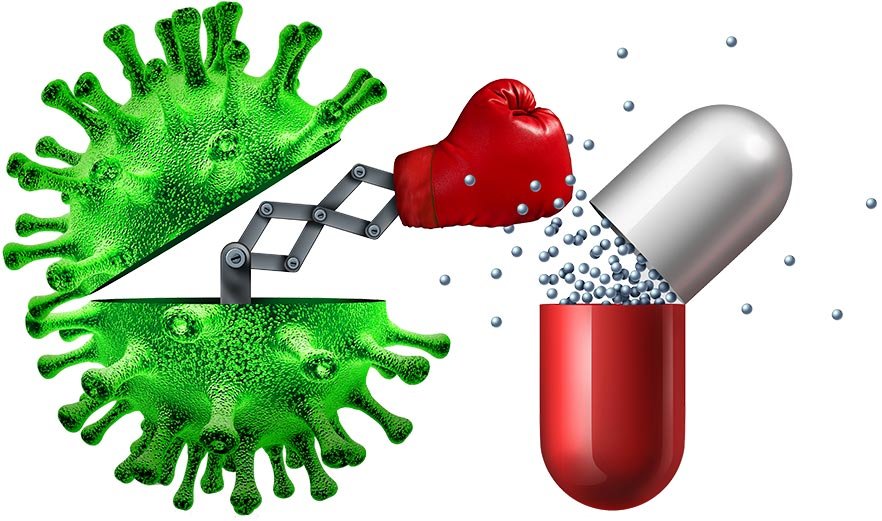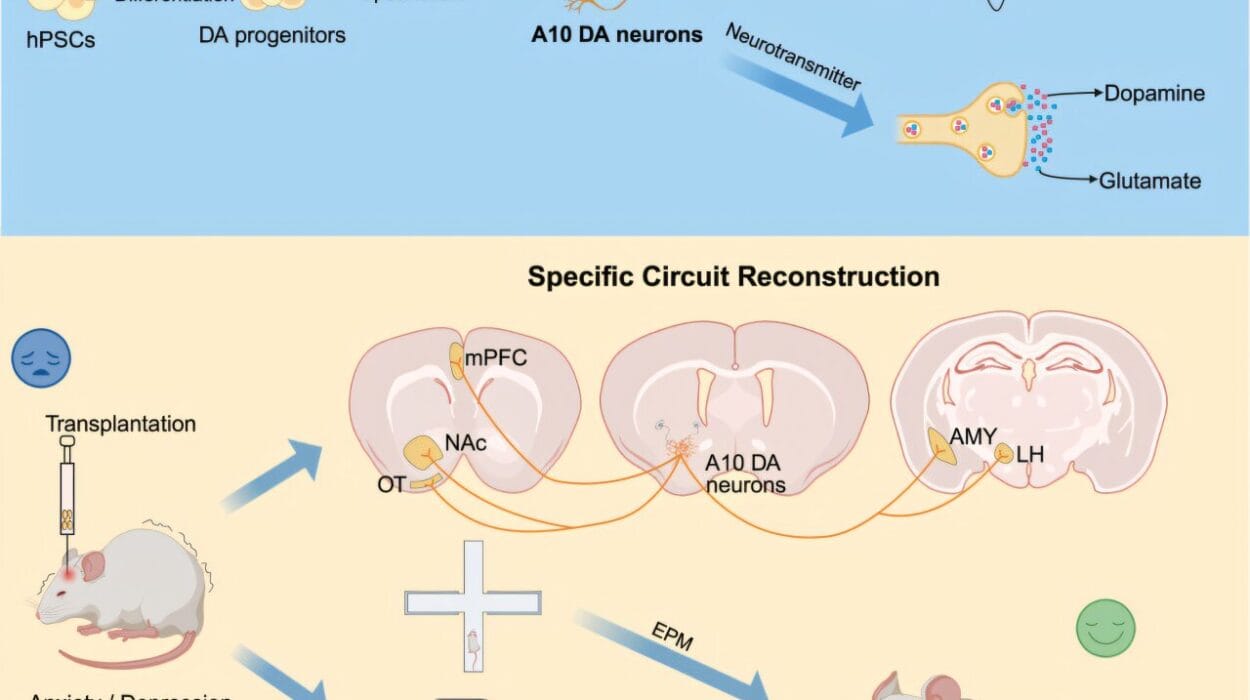In the long annals of human history, few breakthroughs have changed our world as dramatically as the discovery of antibiotics. Once upon a time, even a simple scratch could become a death sentence. A minor infection, left unchecked, could swell into sepsis and steal lives in a matter of days. That all changed in 1928 when Alexander Fleming stumbled upon penicillin, the first true antibiotic, in a messy London laboratory.
Since then, we’ve witnessed a golden age of medicine. Tuberculosis, pneumonia, gonorrhea, and many other bacterial infections that once ravaged populations could now be treated swiftly and effectively. Surgical procedures became safer. Childbirth lost much of its once-unavoidable peril. Lifesaving organ transplants, chemotherapy, and complex operations became possible—all because we could manage infection.
But the miracle that antibiotics brought us is now under grave threat. That threat has a name: antimicrobial resistance.
Unlike pandemics, which make headlines and incite fear overnight, antimicrobial resistance (AMR) creeps in like a whisper. It’s the quiet undoing of our most powerful tools, the slow erosion of our medical confidence. It is not flashy, but it is deadly—and if we do not act, it may return us to a pre-antibiotic world where even the simplest infections are once again untreatable.
Understanding the Basics: What Is Antimicrobial Resistance?
At its core, antimicrobial resistance is an evolutionary phenomenon. Microbes—bacteria, fungi, viruses, and parasites—are living organisms. They are ancient, adaptive, and fiercely competitive. When we expose them to antimicrobial agents—like antibiotics (for bacteria), antivirals (for viruses), antifungals (for fungi), or antiparasitics (for parasites)—they do not all die. A small fraction, by pure chance or genetic variation, might survive. These survivors pass on their resistant genes to their offspring. Over time, the population shifts toward resistance.
Eventually, the drugs that once worked so effectively begin to fail. The microbe is no longer susceptible. It has learned to outwit our weapon. That, in a nutshell, is antimicrobial resistance.
What makes AMR so dangerous is not just that it evolves, but that it spreads. Resistant microbes can pass their survival strategies not only to their descendants but to unrelated microbes as well. They exchange DNA like trading cards in a microbial marketplace. This horizontal gene transfer allows resistance traits to move across species and even across continents.
In this way, AMR is not just a scientific concern—it is a global crisis in the making.
A Closer Look: Antibiotics and Their Limitations
Antibiotics revolutionized medicine. Penicillin was just the beginning. In the decades that followed, a whole pharmacy of antibiotics was discovered or synthesized: tetracyclines, aminoglycosides, macrolides, cephalosporins, fluoroquinolones, and more. Each new class brought new capabilities and new hope.
But every antibiotic has a lifespan. The more we use them, the more pressure we place on microbes to evolve resistance. This is not just true in hospitals but also in the community, on farms, in aquaculture, and even in the environment.
Part of the problem is overuse. For decades, antibiotics have been prescribed for viral infections like the common cold, for which they are useless. They have been handed out in bulk for mild bacterial infections that might have resolved on their own. In some countries, they can even be purchased over the counter without a prescription.
Equally troubling is misuse. Patients often stop taking antibiotics once they feel better, instead of completing the full course. This leaves behind the hardiest bacteria—the very ones most likely to develop resistance.
In agriculture, antibiotics have been used not only to treat sick animals but to promote growth and prevent disease in crowded, industrial conditions. This practice has led to massive antibiotic consumption in livestock, creating reservoirs of resistant bacteria that can jump to humans through food, water, and direct contact.
Global Impacts: The Human Cost of Resistance
Every year, antimicrobial resistance is responsible for hundreds of thousands of deaths around the world. That number is growing—and fast.
A drug-resistant infection often means longer hospital stays, higher medical costs, and a higher risk of death. Once treatable conditions—like urinary tract infections, strep throat, or skin infections—can turn deadly when the first-line antibiotics no longer work.
Certain bacteria, like methicillin-resistant Staphylococcus aureus (MRSA), have become notorious. MRSA causes severe skin and bloodstream infections, especially in hospitals. Carbapenem-resistant Enterobacteriaceae (CRE) are another nightmare—often called “superbugs,” they resist nearly every known antibiotic. These infections can have a mortality rate of up to 50%.
Beyond individuals, AMR threatens entire healthcare systems. Surgeries, cancer treatments, and intensive care all rely on effective antimicrobials. Without them, even minor procedures become major risks. Our medical progress, built on the back of antibiotic effectiveness, could collapse.
The Economics of AMR: A Threat to Development
Antimicrobial resistance isn’t just a health issue—it’s an economic time bomb.
According to projections from global health economists, by 2050, drug-resistant infections could kill 10 million people a year and cost the global economy more than $100 trillion. This figure includes the direct cost of longer illnesses and hospitalizations as well as indirect costs like lost productivity, increased insurance premiums, and overwhelmed healthcare systems.
Developing countries are particularly vulnerable. They often lack robust surveillance systems, have weaker healthcare infrastructures, and may face shortages of effective antimicrobials. The economic shock of AMR could push millions into poverty and reverse decades of progress in public health.
The Role of the Environment in Resistance
Resistance doesn’t evolve in a vacuum. One of the most overlooked contributors to AMR is the environment.
When antibiotics are used in agriculture or flushed down toilets, they enter rivers, lakes, and soils. Wastewater from pharmaceutical factories, laden with antibiotic residues, leaks into local ecosystems. This creates hotspots—called resistance incubators—where bacteria are continuously exposed to sub-lethal doses of antibiotics, perfect for breeding resistance.
In these microbial battlegrounds, resistance genes flourish. They spread not just to pathogens, but to harmless environmental bacteria, forming vast genetic reservoirs that can be accessed by harmful microbes later.
This environmental loop is a critical, often invisible part of the AMR story—and tackling it means confronting pollution, regulating waste, and transforming industrial practices.
AMR and the One Health Approach
No strategy against antimicrobial resistance will work unless it acknowledges the interconnectedness of humans, animals, and the environment. This is the One Health approach.
Human health cannot be protected without also addressing animal health and ecological health. AMR spreads across these domains. Resistant bacteria in livestock can infect farm workers. Waste from animal farms can contaminate water supplies. Resistant strains can travel on imported meat, migrating birds, and international travelers.
To be effective, interventions must be coordinated across sectors. Doctors, veterinarians, farmers, pharmacists, public health officials, environmental scientists—all must work together to reduce antibiotic use, monitor resistance, and educate the public.
This is not just idealism; it is necessity.
A Crisis of Innovation: Where Are the New Drugs?
When resistance makes an antibiotic obsolete, our natural response is to look for new drugs. But here’s the problem: we’re not making enough of them.
Antibiotic discovery is scientifically difficult, expensive, and often unprofitable. Unlike drugs for chronic conditions (which people take for years), antibiotics are used for short courses. Doctors are urged to prescribe them sparingly—exactly the opposite of a good business model.
As a result, many pharmaceutical companies have pulled out of antibiotic research entirely. Of the few new antibiotics developed in the past two decades, most are minor modifications of existing drugs—not true breakthroughs.
We need radical incentives: government funding, public-private partnerships, and new financial models that reward innovation without promoting overuse. Without this, our antibiotic pipeline will dry up just as resistance surges.
Surveillance and Stewardship: Tracking and Protecting What We Have
Another major pillar of the fight against AMR is surveillance—knowing where, when, and how resistance is occurring.
Effective surveillance helps health authorities detect outbreaks, monitor trends, and respond quickly. It also helps identify which antibiotics are still effective and which are losing their punch. Yet in many parts of the world, resistance is underreported or not monitored at all.
Alongside surveillance, we need antimicrobial stewardship: policies and practices that promote responsible use of antibiotics. Hospitals need clear guidelines. Prescribers need training. Patients need education.
Stewardship is not just about using less—it’s about using smarter.
The Role of the Public: Knowledge Is Power
For many years, antimicrobial resistance was viewed as a problem for scientists and doctors. But it’s not. It’s everyone’s problem.
Public awareness is critical. People need to understand that antibiotics don’t work against viruses. They need to know that taking leftover antibiotics, skipping doses, or demanding antibiotics unnecessarily fuels resistance.
Likewise, we need cultural shifts in agriculture and food systems. Consumers can demand antibiotic-free meat, support sustainable practices, and hold industries accountable.
Every individual action matters. The small choices we make—whether taking a full course of antibiotics, washing hands regularly, or refusing over-the-counter antibiotics—are frontline defenses in a global battle.
Global Cooperation: A United Front Against AMR
No country can tackle antimicrobial resistance alone. Bacteria do not respect borders. Trade, travel, migration, and climate change all influence the spread of resistance.
We need international treaties, coordinated surveillance systems, and funding mechanisms to support low-income countries. We need global research agendas and platforms for sharing data.
Organizations like the World Health Organization, the Food and Agriculture Organization, and the World Organisation for Animal Health have developed action plans, but implementation remains uneven. Success will depend on political will, funding, and sustained public engagement.
Rethinking the Future: Alternatives to Antibiotics
In the long run, fighting AMR may require entirely new approaches.
Scientists are exploring phage therapy, where viruses called bacteriophages are used to infect and kill bacteria. This technique has shown promise in treating drug-resistant infections.
Others are developing antimicrobial peptides, CRISPR-based gene editing, and nanotechnology solutions. There is interest in using probiotics, immune boosters, and even artificial intelligence to diagnose infections and guide treatment.
Innovation will be key—not just in drug development, but in diagnostics, delivery systems, and infection control strategies. The goal is not just to treat infections, but to prevent them.
A Turning Point in History
We stand at a crossroads. Antimicrobial resistance is not a distant threat. It is here, now, silently reshaping modern medicine. But it is not yet unstoppable.
We have the knowledge. We have the tools. What we need is urgency.
AMR is a slow-motion emergency, but emergencies don’t always explode—they can also unravel. Every missed opportunity to act tightens the noose. Every unnecessary prescription is another brick in a wall that may one day surround us.
But there is also hope.
Global attention is growing. Young scientists are entering the field. Countries are beginning to invest. The COVID-19 pandemic reminded us that microbes are powerful—but so is collective action.
If we act decisively, wisely, and together, we can preserve the miracles of modern medicine. We can keep infections treatable, protect future generations, and write a new chapter in our relationship with the microbial world—one based not on domination, but on balance.
Because resistance is not just a biological process. It is a mirror. And it reflects the choices we make, the values we hold, and the kind of future we dare to build.






